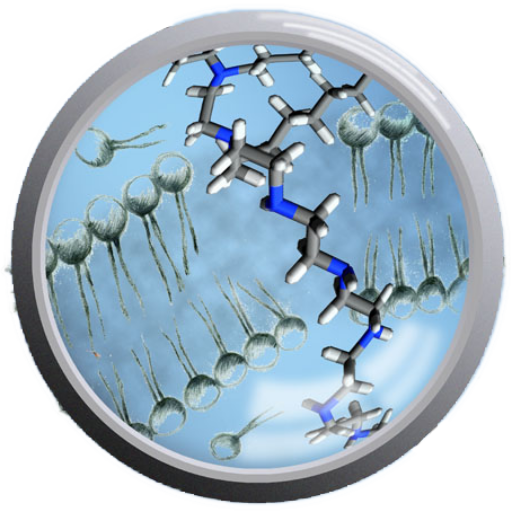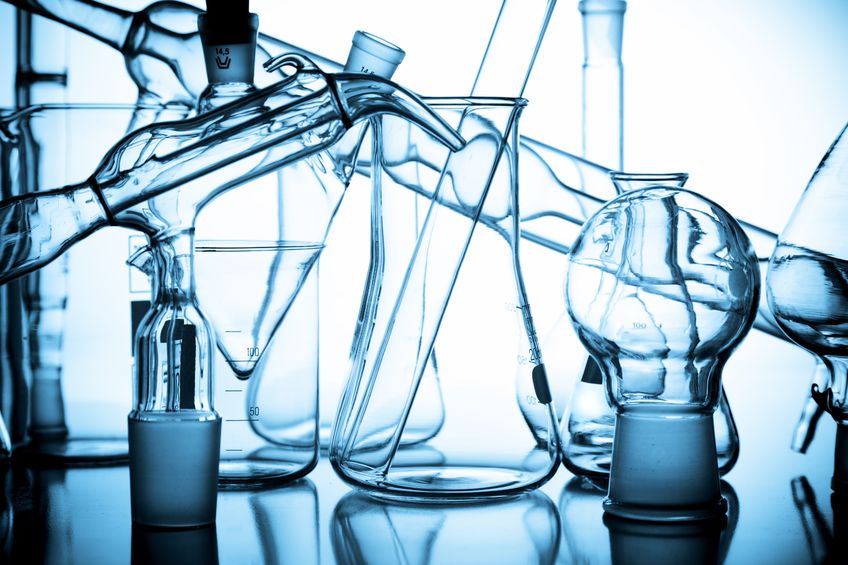Principle Investigator UJ: Mariusz Kępczyński
Co-Investigator WUT: Dominik Jańczewski
2024 – 2028, funded under the OPUS scheme by NCN Poland
Many diseases are caused by bacteria, and while some of them can be treated with antibiotics, the ever-increasing resistance of pathogens to many antibiotics is forcing scientists to search for other substances able to quickly kill bacterial cells. One class of such chemicals are “polycations”: molecules consisting of long chains of repeating units, similar to a pearl necklace, where each unit (‘bead’ of the necklace) carries a positive charge (a ‘cation’). It is known that some of these molecules are very effective at sticking to and subsequently killing these pathogens. Obviously, such bacteria-killing substances should be non-harmful to humans. Unfortunately, many polycations can kill human (animal) cells as well as bacterial ones, which is their undesirable effect. How exactly they do that remains a mystery. In addition, polycations are used as ‘carrier’ molecules for negatively charged biomolecules, such as DNA or RNA, which often need to be delivered directly to cells, for example in RNA vaccines.
Here, we aim to answer several lingering questions related to polycations, in particular, what mechanisms of polycation action cause their toxicity to human cells. This will allow us and other researchers to design better polycations with desired properties. In particular, we hypothesize that the toxicity of polycations may be related to their blocking of ion channels. Ion channels are a large family of membrane proteins that are found in the plasma membrane and allow ions to move in and out of the cell. These transport processes are critical for the good health of every cell in our bodies, and at the same time, they are the microscopic basis for the transmission of nerve impulses. It is therefore no surprise that malfunctions of these proteins can be very dangerous and, in some cases, lead to cell death. The importance of ion channels has been recognized in the past two decades with two Nobel Prizes awarded to scientists working on them: The 2003 Nobel Prize in Chemistry was awarded “for discoveries concerning channels in cell membranes” jointly with one half to Peter Agre “for the discovery of water channels” and with one half to Roderick MacKinnon “for structural and mechanistic studies of ion channels”, and The 2021 Nobel Prize in Physiology or Medicine was awarded “for discoveries of receptors for temperature and touch” jointly to David Julius and Ardem Patapoutian.
Certain animals, such as scorpions and cone snails, among others, exploit the propensity of ion channels to be blocked for hunting their prey. The venom of these animals contains small molecules (peptides) that bind and block ion channels like a ‘cork in a bottle’, resulting in paralysis or death. Even more interesting is that many of these peptides look very similar to polycations on a macroscopic scale, which gave us the idea to look at the similarities and differences between the mechanism of action of these two classes of molecules.
The goals of this project are fourfold: i) to design and synthesize several model polycations, with different locations of the positive charge, ii) to measure their toxicity versus bacterial and human cells, iii) to measure the ability of the polycations to block ion channels, iv) to understand the physicochemical principles of the cytotoxic effect of the polycations. To achieve these, we will combine several experimental and computational techniques. Organic synthesis methods will be used to modify commercially available polymers, to give them a permanent positive charge. Subsequently, polycation toxicity will be tested against several human cell lines, which can be visualized using several microscopy techniques. We will measure whether these polycations can indeed block ion channels, similar to animal toxins, using electrophysiological measurements. In this type of measurement, the electrical properties of cells that result from the action of ion channels are measured. Finally, computer simulations will allow us to visualize and understand the measured activity of polycations at atomistic levels. These simulations combine the physical and chemical principles with advanced computer algorithms to provide a “movie” of atoms and molecules in motion, mimicking their real-life behavior. This provides a unique insight into the action of the studied molecules at the atomistic level and constitutes a bridge between different experimental techniques toward a full understanding of the phenomenon under study. We expect to understand why polycations are toxic, and the mechanism(s) behind this toxicity. In particular, we plan to confirm or reject the hypothesis that polycations block ion channels. Both outcomes will have substantial implications for the design and producing new less toxic polycations in the future. Given the wide application of polycations in many fields, our research will lead toward better, less toxic, and more efficient polycation-based carriers.



